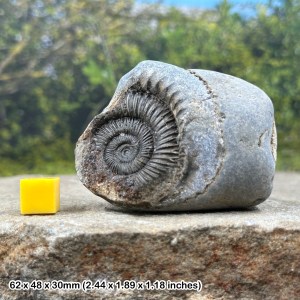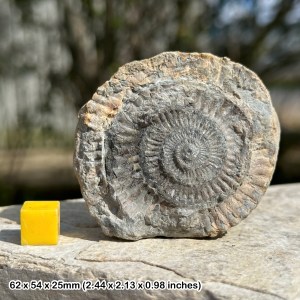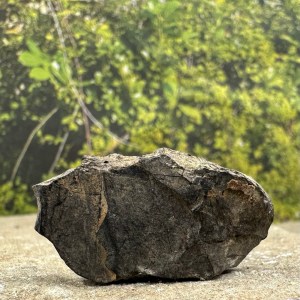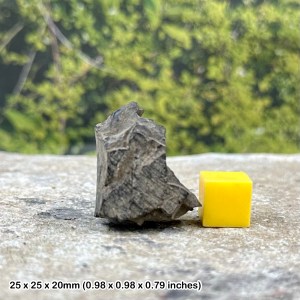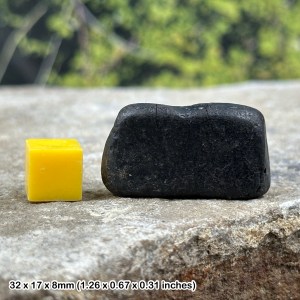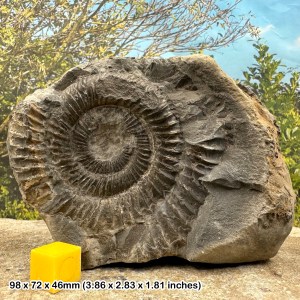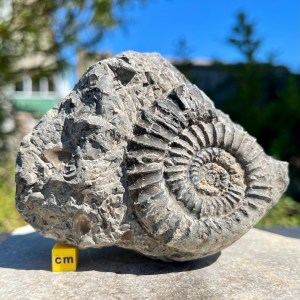This is a very popular location, but is sometimes difficult to access due to tide conditions. Whitby yields many ammonites, reptiles and shells, and is also famous for jet, which is the fossilised wood of monkey trees and used in jewellery. However, you can encounter a lot of competition at Whitby in your search for fossils.
DIRECTIONS
♦ Access this location from the East Pier at Whitby. However, this can only be done about three to four hours after high tide and you must ensure you return in good time.
♦ Ref: 54.49101°N, 0.60788°W
PROFILE INFO
FIND FREQUENCY: ♦♦♦♦♦ – Whitby yields excellent ammonite specimens and dinosaur/reptile remains, but attracts a lot of collectors. The best time to collect is during winter storms or scouring conditions.
CHILDREN: ♦ – Due to the dangerous access to this location, young children should not visit the beach at Whitby.
ACCESS: ♦♦♦ – Access is made from Whitby’s East Pier. You will need to wait until you can get round, as the tide comes very high and you must ensure you can return in good time.
TYPE: – Most fossils can be found on the foreshore at Whitby, especially after storms or scouring conditions, within nodules or loose within the areas of shingle and shale. However, fossils are also commonly found in the cliff and on the scree slopes, either in nodules or loose.
FOSSIL HUNTING
Most fossils can be found in foreshore nodules or loose within the shingle. However, bones can also be found in the cliff face and in large nodules. The best area to collect is the foreshore. Look for nodules with ammonites in. Often, these have the sides of the ammonite showing around the edges of the nodule. Note that nodules can often be found trapped under rocks. Also, examine the cliff face about one metre above beach level, as reptile remains can be found in this bed.
The beds past the coastguard station and exposed on the foreshore have large blocks of fine-grained sandstone with concretions of sideritic mudstone. This is the famous Whitby Plant Bed and is full of superb plants.
The Whitby Mudstone and Alum Shales are exposed on the highest part of the shore and at the foot of the cliff. These contain fossil wood and pyritic mudstone, which is full of poor grade (crushed) jet and the small bivalve, Dacryomya ovum. Above this are the Cement Shales, overlain by the Dogger and Saltwick Formations. Further round below the coastguard station, the beds occasionally yield reptile remains.
Past the coastguard station, the Alum Shale Member is rich with bivalves (Dacryomya ovum and Pleuromya sp.) and ammonites (Dactylioceras and Hildoceras). Many of the ammonites have the middles missing. Reptile remains can also be found in the cliff face or washed out during high tides.
At the small bay, the Dogger Formation reaches beach level. The famous Whitby Plant Beds here yields fossil plants (Williamsonia, Baieria, Coniopteris and Czechanowskia).
GEOLOGY
The Whitby Mudstone Formation’s Alum Shale Member is exposed on the highest part of the shore and at the foot of the cliff. The Alum Shale is a mudstone; grey, non-bituminous, with common layers of grey calcareous concretions particularly in the lower (Hard Shale Beds) and upper (Cement Shale Beds) parts; the median part (Main Alum Shale) is softer, less silty and generally less calcareous, and weathers pale grey and yellow; fossils including ammonites, bivalves and belemnites common throughout.
The upper bed of the Whitby Mudstone, the Cement Shales, is overlain by the Dogger Formation and Saltwick Formation. At the top of the section, the Eller Beck Formation typically comprises marine ironstone, sandstone and mudstone.
East Cliff is made up of dark grey, highly fossiliferous shales from the Whitby Mudstone Formation (of Toarcian age from the Lower Jurassic).

SAFETY
Common sense when collecting at all locations should be used and knowledge of tide times is essential. It is very easy to get cut off at Whitby, as the sea always reaches the base of the cliff. You should ensure you return before the tide turns. Also be aware of sticky areas on the slippages, as it is easy to get stuck, especially after rain.
EQUIPMENT
Most of the fossils can be found in foreshore nodules or loose within the shingle, however bones can also be found in the cliff face and in large nodules. You will need to take a pick and hammer for both instances.
ACCESS RIGHTS
This site is a site of special scientific interest (SSSI). This means you can visit the site, but hammering the bedrock is not permitted. For full information about the reasons for the status of the site and restrictions, download the PDF from Natural England.
It is important to follow our ‘Code of Conduct’ when collecting fossils or visiting any site. Please also read our ‘Terms and Conditions‘
LINKS
♦ Buy Fossils, Crystals, Tools
♦ Location Discussions
♦ Deposits Magazine
♦ Join Fossil Hunts
♦ UK Fossils Network
-
Ammonite Dactylioceras Commune, Jurassic, UK Fossil, Genuine
£18.00 -
Ammonite Fossil Half, Marine Animal, Genuine UK Jurassic Specimen, Certificated
£10.32 -
Authentic Whitby Jet – Timeless Elegance and Natural Beauty
£4.80 -
Authentic Whitby Jet – Timeless Elegance and Natural Beauty
£7.80 -
Authentic Whitby Jet – Timeless Elegance and Natural Beauty
£7.80 -
Authentic Whitby Jet – Timeless Elegance and Natural Beauty
£7.80 -
Authentic Whitby Jet Coal for Healing, Therapy, and Meditation Stones
£7.20 -
Beautiful Dactylioceras Ammonite Fossil, Yorkshire, Jurassic
£16.80 -
Dactylioceras commune (Grade A), Jurassic, Yorkshire
£24.00





















